Video Games
How Many GB is Fortnite? [PC/Mobile/Playstation/XBox]
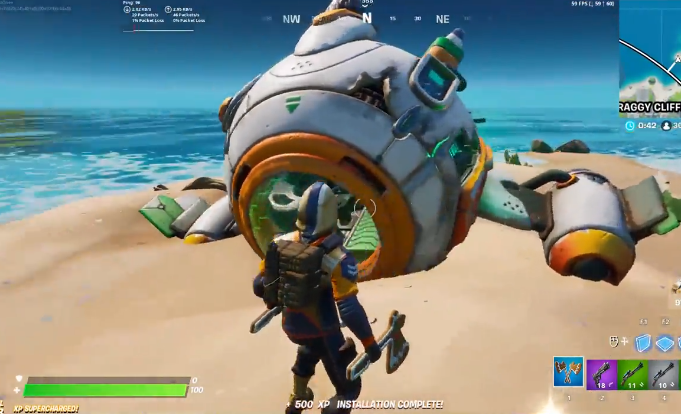
Fortnite is one of the most popular games, alongside Freefire and PUBG. These games are large in size, and we are looking at how they might fit into less storage space on the smartphone.
Gaming on a PC typically takes up a lot of hard drive space, which can consume the whole system’s hard drive in minutes.
The issue of taking up a lot of space has been identified, and a remedy has been offered.
This news excites the users, who appear to be extremely happy about the new upgrade for managing storage space.
How many GB is Fortnite for PC??
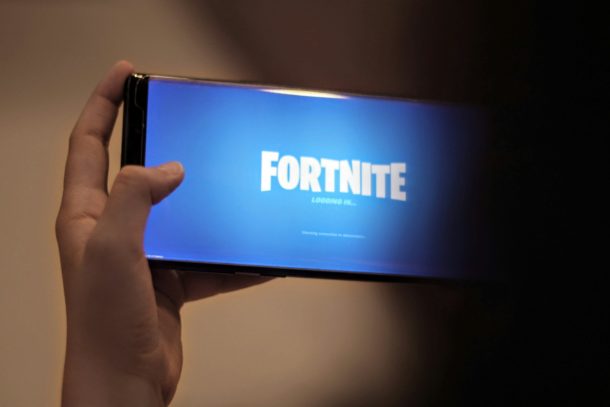
As the game’s size is reduced from 90GB to 30GB, gamers question how it compares to other games.
For example, Call of Duty: Warzone offers the option of being smaller, but the game itself is larger. A recent update increased the game’s size to almost 250GB, so gamers will appreciate having the option to delete some of it.
Other PC games, like PUBG, need around 30GB of hard disc space and are comparable to Fortnite due to their smaller file sizes.
Players of both battle games are pleased with the adjustment. While the previous version used around 32.5GB. Epic Games made a tremendous step by decreasing the game’s size.
In a nutshell, the minimum system requirements to download Fortnite on PC are mentioned below:
- CPU: Core i3 2.5GHz
- GPU: Intel HD 4000 (integrated graphics)
- OS: 64-bit Win 7, 8, or 10
- RAM: 4GB
- HDD: 16GB free space
- DirectX: Version 11
Also Read: Why does Fortnite Keep Crashing? [7 Quick Fixes]
How many GB is Fortnite for PS4?
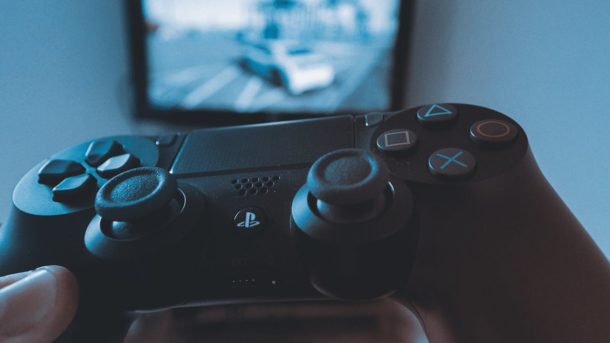
First, check that the user is connected to a broadband router over Ethernet or Wi-Fi. Then, after logging in to your PlayStation account, choose X from the main menu.
Search for Fortnite, then follow the directions to download it.
Initially, 8 GB of data will be downloaded before installation. During installation, the game system will download an additional 10 GB to make the game playable.
As a result, a minimum of 23 GB of free space is necessary to download Fortnite on your PlayStation 4, despite the fact that the game will only take up 18 GB.
How many GB is Fortnite for XBOX?
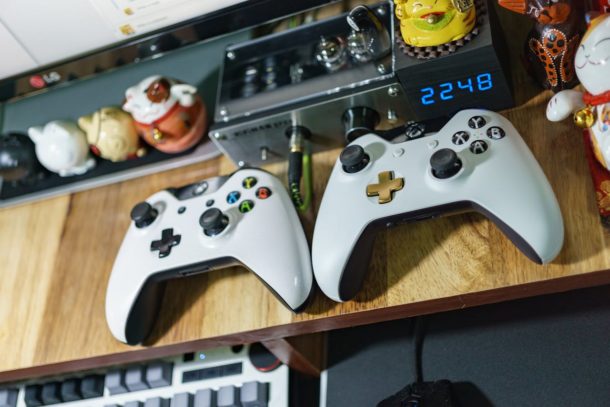
You must first download 13 GB of the game’s system files to begin the installation.
During installation, customers must download an additional 5 GB of the data files required for smooth gaming.
The entire file size for Xbox One is around 19 GB. For Xbox Series X, Fortnite’s download size is around 22.5 GB.
Also Read: How Old is Noelle Genshin Impact: Age of Heroes
How much GB is Fortnite on Nintendo Switch?
The download size of Fortnite for Nintendo Switch is quite tiny compared to other platforms. The game is around 12.2 GB, which is less than the PC, Xbox, and PlayStation editions.
However, gamers should know that this size may expand over time owing to updates and additional content. Make sure you have adequate free storage space on your Nintendo Switch system.
How much GB is Fortnite on Mobile?
Fortnite’s file size on Mobile devices varies depending on the operating system and device model. For iOS devices, the game size is around 9 GB, while on Android devices, the size can vary depending on the device and the game version.
It is worth noting that Fortnite on mobile is only available for certain devices, and not all devices can run the game smoothly. Additionally, the size of the game can increase over time due to updates and new content.
Also Read: How Much Scrap Does Tech Trash Give – Rust
What Factors Affect Fortnite’s Size?
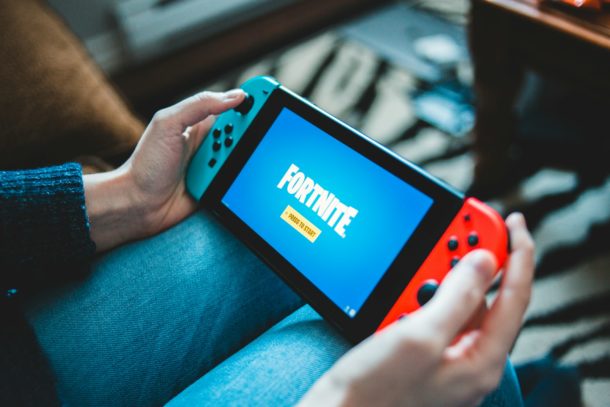
Player Base
Fortnite’s size is heavily influenced by its player base, which fluctuates based on new content updates, in-game events, and seasonal changes. As the player base grows or declines, the overall size of Fortnite’s community and ecosystem also changes, affecting factors like matchmaking times, server load, and the availability of opponents in gameplay.
Content Updates
The frequency and scale of content updates significantly impact Fortnite’s size. New seasons, challenges, skins, weapons, and map changes introduced through updates contribute to the game’s overall size. These updates attract players to return to the game and increase the installation size as additional assets and features are added.
Graphics and Assets
The quality of graphics and assets in Fortnite determines the game’s size. High-resolution textures, detailed character models, and complex environmental elements contribute to larger file sizes. As developers strive to improve the game’s visual fidelity, the size of Fortnite’s installation files may increase to accommodate these enhancements.
Cross-Platform Compatibility
Fortnite’s availability across multiple platforms, including PCs, consoles, and mobile devices, necessitates compatibility adjustments and optimization efforts. Supporting diverse hardware configurations and operating systems adds complexity to the game’s codebase and increases its overall size to ensure a consistent platform experience.
Also Read: How Big is Fortnite? System Requirements [Laptop and PC]
Final Thoughts
Fortnite’s size is influenced by many factors, including its player base, content updates, graphics and assets, cross-platform compatibility, audiovisual effects, and backend infrastructure. As the game continues to evolve and expand, developers must balance the demand for new features and enhancements with considerations of storage space and performance optimization to maintain a seamless and enjoyable gaming experience for players across all platforms.
Video Games
The Best Esports Tournaments for Fans Who Love Making Predictions
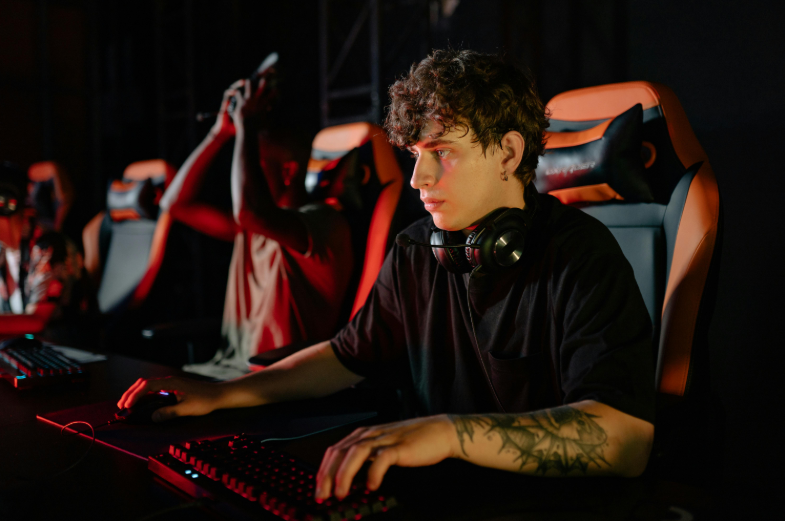
You can easily find people of all ages engaging in esports. Today, esports is without a doubt a hobby that attracts millions across the globe and even offers an adrenaline rush through prediction markets. Moreover, some tools aggregate information and aid users in placing bets during pinnacle events. Such tools have simplified betting by providing all the required information in one place during marquee events and have given way to platforms like Oddspedia.
AI-Powered Prediction Markets in Esports
Wagering on esports is far more exciting these days; AI has stepped up to revolutionize the space. With AI-powered systems, forecast-based and data-driven predictions have made leaps in accuracy and profitability within betting. Statista even predicts the growth of the esports betting market from 9.2 billion in 2021 to 13 billion by 2025. These types of wagers allow fanatics to bet on match outcomes, player performance and various other components of a game based on real-time data pulled by algorithms.
For fans, they now have the opportunity to test their knowledge in exciting new ways. Oddspedia enhances events by offering real-time odds, which let fans modify predictions as tournaments progress. Be it a grand World Cup Dota 2 match or a League of Legends clash, all are heavily monitored with ever-changing opportunities for predicting endings.
The International (Dota 2)
TI has long been considered the king of all esports tournaments and held its position in 2024 with over 2.7 million concurrent viewers and an astonishing prize pool of 40 million dollars. The event itself is basically the ultimate war zone for elite Dota players, but also brings immense value for sports bettors around the globe.
Wagering on results such as who will win each match, certain player performance marks and even specific game happenings such as first blood and first tower is all available, especially considering all the funds available; there’s no shortage of options vying for just about every guess possible during one of the largest esports tournaments globally. It’s easy to see why many athletes struggle while ceaselessly trying to take advantage out there, earning crazy amounts via forecasts during tourneys like these. You can bet big on global tournaments at platforms like Oddspedia, where you are provided endless betting possibilities, making educated decisions. Users can use a specific code, enabling them to bet even more freely throughout the tournament.
League of Legends World Championship (Worlds)
League of Legends Worlds is not only an esports competition but also a cultural event. For the first time in 2024, over 6.9 million people watched it at once. With AI-enabled betting services, fans can make well-informed wagers on who will win or lose months in advance, as watching teams battle for the much-coveted trophy becomes even more engaging with strategic betting options.
Bettors can wager on match winners, game durations and even specific player performances. Given the unpredictability of the tournament, a deep understanding of the game is crucial when placing bets. During the event, predictions can be made in real-time and adjusted based on live streaming odds offered by sites like Oddspedia that track changing odds. If you want to take your advantage to another level, certain promo codes are available for users who wish to receive special bonuses while betting.
CS:GO Majors
Every year, some expected events cannot be missed and one such global event is none other than the CS:GO Definition Tournament, known as CS:GO Majors. These tournaments specifically focus on providing attention-grabbing esports coverage that keeps viewers on the edge of their seats during such epic gaming battles through real-time wagering opportunities.
For bettors, there are numerous options besides just predicting the outcomes of matches. Bets can be placed on kill counts, round victories and even who will execute the first bomb plant. These real-time bets are why CS:GO Majors are so popular among gamblers who want to be more involved with the game. Sites like Oddspedia allow you to make wagers in real time and access special bonus codes that provide free bets.
Valorant Champions Tour
Valorant, Riot Games’ tactical first-person shooter, has risen in popularity quickly, making The Valorant Champions Tour (VCT) one of the most awaited esports events of 2024. With millions of viewers each year, it’s understandable why fans and bettors are excited about it.
There are countless betting options available for Valorant as well, including predictions for matches, performance metrics for individual rounds, or player-specific statistics. Because of how rapidly the game moves, it’s great for live and in-game betting. Oddspedia offers console streams and gives out special codes for discounts while watching live coverage of tournaments.
PUBG Mobile Global Championship
As the most significant player in the mobile gaming sphere, PUBG Mobile has captured the attention of millions through its tournaments, PMGC, earning it a spot as one of the esports industry’s crowning jewels. The number of players participating and contest prize pools show consistent growth as time goes on.
For esports bettors, every match brings unique chances to stake predictions on everything from team eliminations to individual player stats and wagers can be placed for each round separately due to the rapid pace of the game. Fans are also able to use specific promo codes during these tournaments, letting them access additional bonuses, which provide better odds for wagering.
Betting Markets and Esports Fandom
One of the newest additions to esports is prediction markets, revolving around betting or gaming smarter with strategy entwined in every aspect for greater accuracy towards winning outcomes—everything is dependent on players’ statistics featuring their past performance alongside team coordination and events happening in battle like TKs, plus time off combat log between gamers. Oddspedia offers bettors real-time odds alongside several tournaments where they can track wagers placed, making it easier than ever before to place bets. As prediction markets become integrated with live betting and AI analytics, esports betting has turned into a more exciting activity. Fans who like making informed bets can now sync their wagers as the event unfolds.
What’s Next for Esports Betting?
In my opinion, esports betting will further integrate with AI-informed prediction markets going forward. These AI-driven markets will be able to offer better insights when it comes to teamwork, athlete-specific performances and other key milestones within a game. There will always be countless possibilities in making data-driven predictions that fuel fierce competition in esports tournaments.
Video Games
How Long Has Online Gaming Been Around TheHakevent: Tracing the Evolution and Impact of Online Gaming

Online gaming has evolved from simple multiplayer games to a massive global industry, shaping the way we interact, compete, and enjoy digital entertainment. One of the key players in the ongoing growth of online gaming is TheHakevent, a platform that has continuously played a role in connecting gamers worldwide. But how long has online gaming been around TheHakevent, and how has it influenced the broader gaming world? Let’s take a deep dive into the origins, development, and future of online gaming, with a special focus on TheHakevent’s role in its journey.
The Beginnings: How Long Has Online Gaming Been Around TheHakevent?

Online gaming has roots that date back to the 1970s, with some of the earliest networked multiplayer games emerging in academic settings. However, how long has online gaming been around TheHakevent? To understand its role in the industry today, we must first look at the origins of online gaming.
In the late 1970s and early 1980s, games like Pong and Spacewar were among the first to offer multiplayer functionality, albeit in a rudimentary form. These games laid the foundation for networked gaming experiences that would eventually evolve into the sophisticated online gaming world we know today.
The Growth of Online Gaming: How Long Has Online Gaming Been Around TheHakevent?
As the 1990s arrived, the internet became a common household feature, enabling a new era of online multiplayer gaming. Early internet-connected games like Doom and Warcraft introduced players to the idea of battling or collaborating over long distances. However, it was the creation of massively multiplayer online games (MMOs) that truly began answering the question, “how long has online gaming been around TheHakevent?”
During this period, players began to realize the potential for social interaction within gaming, paving the way for platforms like TheHakevent, which have organized large-scale online events and tournaments. These games allowed players to interact with thousands of others in a shared virtual world, a revolutionary concept at the time.
How to Fix GTA IV Crashes and Freezings on PC?
TheHakevent and Its Influence on the Online Gaming Community
By the early 2000s, broadband internet made it possible for even more gamers to play together at high speeds, which fueled the explosion of online gaming. As we ask how long has online gaming been around TheHakevent, we see that it wasn’t until the rise of events like TheHakevent that online gaming truly became a community-driven phenomenon.
TheHakevent played an instrumental role in the competitive gaming scene, bringing together both casual and professional gamers through online tournaments. This transition helped solidify online gaming as more than just a pastime—it became a competitive sport. TheHakevent’s tournaments allowed players to showcase their skills in games like League of Legends and Counter-Strike, contributing to the growth of esports.
The Technological Evolution of Online Gaming: How Long Has Online Gaming Been Around TheHakevent?

Online gaming has seen numerous technological advancements over the years, each answering the question, “how long has online gaming been around TheHakevent?” Improvements in internet speed, graphical fidelity, and player accessibility have all shaped the online gaming experience.
Broadband internet became widely accessible in the early 2000s, improving connection speeds and allowing players to interact with each other in real-time. Around the same time, TheHakevent started focusing on providing a seamless online experience, pushing the boundaries of what was possible in competitive online events.
Cloud gaming platforms, such as Google Stadia and Xbox Cloud Gaming, are the latest evolution in online gaming technology. These platforms allow players to stream games without needing powerful hardware, answering the growing demand for accessibility. As cloud gaming continues to evolve, so too does the role of organizations like TheHakevent, which helps bridge the gap between developers and players by creating accessible, scalable online tournaments.
TheHakevent and the Growth of Online Gaming Genres
As online gaming has expanded, so have the genres. Initially, it was all about simple multiplayer games like Doom and Quake. However, the rise of TheHakevent and its involvement in larger gaming communities has led to the growth of genres like MMOs, battle royales, and competitive multiplayer games.
For example, World of Warcraft (WoW) revolutionized the MMO genre, offering an expansive world for players to explore together. TheHakevent helped promote games like WoW by organizing community-driven events, creating a sense of camaraderie among players. Battle royales like PUBG and Fortnite took the online gaming world by storm, and TheHakevent played a role in connecting players for larger competitive events, showcasing the increasing professionalization of online gaming.
The Best Video Game Sports Franchises of All-Time
How Long Has Online Gaming Been Around TheHakevent? The Impact on the Global Economy
As the question of how long online gaming has been around TheHakevent continues to resonate, it’s clear that online gaming has become a multi-billion dollar industry. Esports alone generates billions of dollars annually, and TheHakevent has helped fuel this growth through the organization of large-scale events and tournaments. Sponsorships, ad revenue, and ticket sales from these events contribute to the industry’s expansion.
Additionally, streaming platforms like Twitch and YouTube Gaming have played a massive role in popularizing online gaming. These platforms allow gamers to broadcast their gameplay, creating communities that thrive off of content creation, interaction, and live events, many of which are linked to TheHakevent‘s initiatives.
The Future of Online Gaming: How Long Has Online Gaming Been Around TheHakevent?
Looking ahead, TheHakevent continues to be a driving force in the online gaming community. As we consider “how long has online gaming been around TheHakevent,” it’s clear that the future holds even greater potential for growth and innovation. The advent of virtual reality (VR) and augmented reality (AR) will take gaming to new levels of immersion. Esports will continue to rise in prominence, with more global tournaments and events bringing players together in both virtual and physical spaces.
Cloud gaming will likely play a major role in making high-quality games accessible to players on any device, creating even more opportunities for TheHakevent to host accessible and scalable gaming events. With these technological advancements, TheHakevent will continue to shape the competitive landscape, enabling players worldwide to connect, compete, and grow within the gaming world.
Conclusion: How Long Has Online Gaming Been Around TheHakevent?
As we reflect on the history and future of online gaming, one thing is clear: the question of how long has online gaming been around TheHakevent highlights the immense growth and transformation of this global phenomenon. From its humble beginnings in the 1970s to its rise as a multi-billion dollar industry today, online gaming continues to evolve, shaped by technological advances, community-driven platforms, and pioneering organizations like TheHakevent.
The next few years promise even greater innovations in gaming technology, with VR, cloud gaming, and AI shaping the experiences of both players and developers. TheHakevent will undoubtedly remain at the forefront of this revolution, continuing to bring players together and fostering the next generation of gaming professionals and enthusiasts.
Video Games
Is Minecraft Good For Kids? What Parents Need To Know
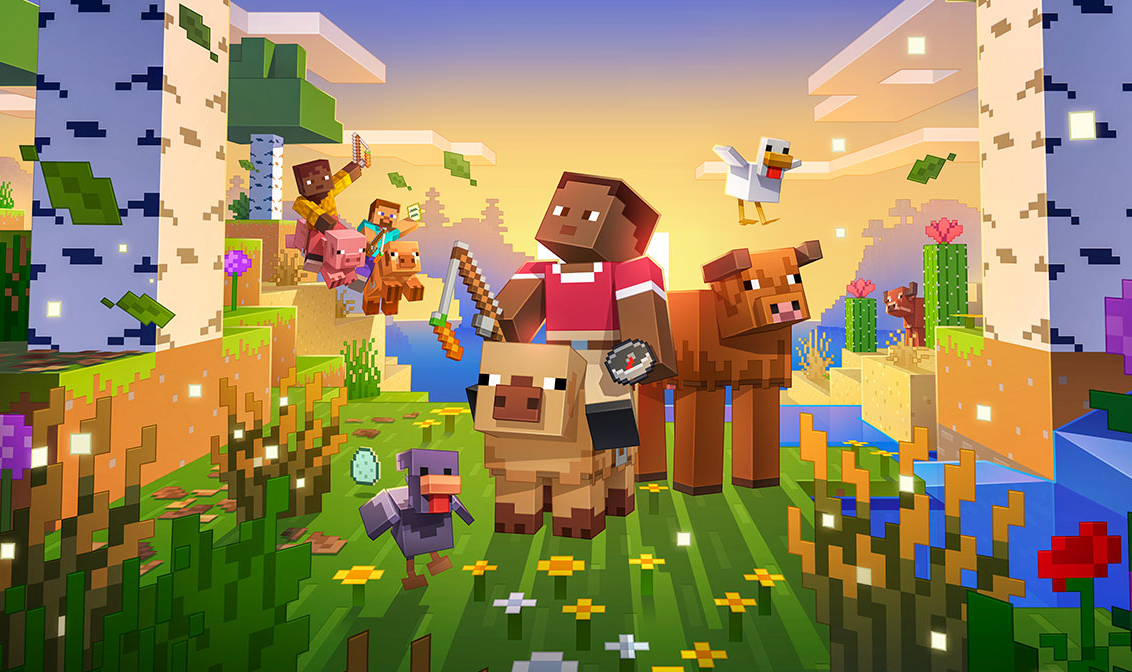
Key Takeaways
- Minecraft is a safe and educational game that encourages creativity, teamwork, and problem-solving.
- Privacy and online safety concerns exist, especially in multiplayer mode where kids may interact with strangers.
- Excessive screen time can be an issue, so setting limits is essential for healthy gaming habits.
- Mods and third-party downloads may contain malware, so parents should ensure kids download from trusted sources.
Introduction
In May 2023, a group hacked some of the most popular Minecraft mods. This begs the question of whether your children’s privacy is at risk? And most importantly, what is Minecraft doing to protect children below the age of 18.
In this blog, we will answer such questions in detail!!
So, What Is Minecraft? And How Do Kids Play It?
It’s important to get through the basics first if you are really worried about your children’s privacy in the online world.
Basically, Minecraft invites players into a sprawling, open-ended 3D universe where they can explore, create, and connect with others. It’s a sandbox that allows players to gather resources, construct buildings, and craft items.
The real charm of Minecraft lies in the creativity and freedom it offers. Kids are drawn to it because they can mold the world to their liking, free from the stress of competition. It’s a game that fosters imagination, problem-solving, and teamwork—it’s also a valuable learning opportunity.
There’s nothing inherently wrong with Minecraft that should be a cause of worry for your child but Minecraft has its own mods, slangs that every parent should know for their child’s safety.
Also Read: What Does “GG” Mean in Roblox?
Educational Benefits Of Minecraft

Let’s start with the good things like Minecraft’s wider goal and positive aspects.
Unlike a lot of video games that have strict missions, Minecraft opens up a whole world where kids can let their imaginations run wild. They can build everything from massive castles to fully functional roller coasters, picking up important design and engineering skills along the way—often without even realizing they’re learning!
But it’s not just about the building aspect. Minecraft also teaches kids about problem-solving and managing resources, especially in Survival Mode. Here, players need to gather materials, craft tools, and defend themselves against enemies. If they don’t think ahead, they could end up stuck outside at night without a safe place to hide—or worse, face a swarm of zombies! These kinds of challenges really push kids to think critically and come up with strategies, much like they would in real-life situations.
And for parents who want a more organized learning experience for their child should opt for Minecraft: Education Edition. It brings subjects like coding, history, math, and even chemistry to life in a fun and interactive way. A fun fact- Classrooms around the globe have started using it to turn learning into an exciting adventure rather than a tedious task.
So, even though it might look like just another video game, Minecraft can actually teach your child to think like an architect, plan like an engineer, and work together like a team leader—all while having a blast.
Also Read: How To Use Gimkit – A Beginner Guide
Potential Risks And Concerns For Parents
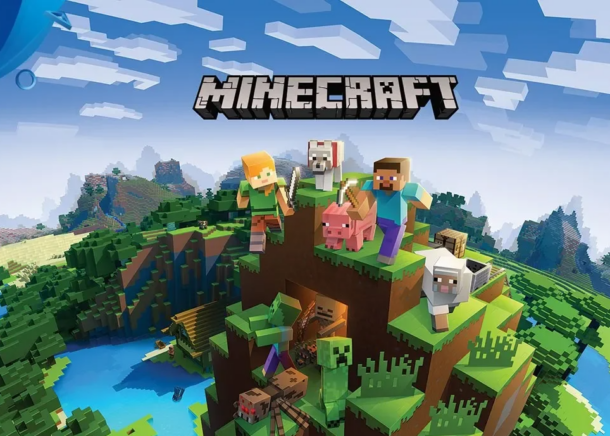
Positives aside, there are things in Minecraft that you should be aware as parents for your children’s safety:
Online Interactions And Stranger Danger
Minecraft’s multiplayer mode is great!! It’s a way for kids to connect with friends or even meet new people in the virtual world. While it teaches a great lesson in cooperation and teamwork, it also brings the risk of cyberbullying and unwanted interactions. A study from Internet Matters in 2022 revealed that a staggering 60% of kids have faced some form of online harassment while playing multiplayer games.
So, what can you do? If your child enjoys playing online, make sure they’re on a private server with friends instead of in public lobbies where anyone can jump in. It’s also important to enable chat filters and have conversations with your child about online safety—like the importance of never sharing personal information.
Screen Time And Addiction
Minecraft is vast and endless, and simply put, amazing!! The developers have built a world that really draws people in—so much so that they find it tough to tear themselves away. The World Health Organization has even acknowledged gaming disorder as a legitimate issue, where too much gaming disrupts everyday life. While Minecraft itself isn’t necessarily addictive, its open-ended nature makes it tricky for kids to know when to call it quits.
But here’s a simple solution:- Keep screen time to no more than 1-2 hours a day for kids. You can use parental controls (that we will tell you about in detail) or simply setting a timer can help avoid those late-night mining sessions.
Mods And Downloads: A Playground For Fun (And Malware)
Minecraft has mods!! They are custom tweaks that bring in new characters, mechanics, and even some educational tools. But here’s the catch: most of the mods on Minecraft are not official. And they often come from sketchy third-party sites, where malware and viruses can hide.
We recommend you to teach children to always stick to trusted sources like the Minecraft Marketplace or CurseForge when downloading mods. It’s a good idea to encourage kids to check in with you before they install anything new, and don’t forget to keep that antivirus software up to date!
Also Read: Which Hand Do You Wear A Golf Glove On?
In-Game Purchases: Every Adult’s Nightmare
Have you ever had an unexpected notification of money debiting towards an unwarranted purchase? If yes, then that could be your child spending it all away on Minecraft. While the base version is free, there are plenty of things offered in-game to spend on.
The options range from texture packs, skins and maps, which typically range from 100 to 1,500 Minecoins (that’s Minecraft’s virtual currency, by the way). Just to give you an idea, 1,720 Minecoins will set you back about $10. These purchases aren’t necessary to enjoy the game, but some kids, under peer pressure, are more tempted to spend a little on customizing their experience.
Violence And Scary Elements
There is no GTA like violence going on here and Minecraft is a pretty non-violent game overall. But Minecraft’s survival mode features some pretty scary creatures like zombies, skeletons, and Endermen, which can be a bit much for younger kids. While the pixelated combat isn’t too intense, some children still feel uneasy—especially when they’re in dark caves or facing off against foes at night.
If your child is a bit sensitive to those spooky elements, Creative Mode is a great option. It takes away all the threats and lets them explore the world at their own pace.
Setting Up Parental Controls And Safety Measures

We have some pointers that can help you as a parent to protect your child.
Setting Up Child-Friendly Accounts
First things first—if your child is gaming on Xbox, PlayStation, or PC, it’s essential to set up a child account through Microsoft Family Safety. This allows you to manage their screen time, block purchases, and filter their online interactions. For mobile devices, you can use Google Family Link or Apple Screen Time. Just go to the settings and you will be able to access parental settings.
Controlling Online Interactions
When it comes to Minecraft, there are two modes: single-player (which is pretty safe) and multiplayer (the one we mentioned above). Whenever your child is diving into the online world, make sure to adjust the privacy settings in their Microsoft account to limit chatting with strangers. Plus, Minecraft now offers Realms that lets kids play only with their approved friends, family members etc.
Monitoring Playtime
You know that classic line, “Just five more minutes!” that somehow turns into two hours? Setting time limits using Xbox Family Settings or your device’s screen time features will help keep gaming in check and ensure it stays within a healthy range.
Also Read: Godot Engine vs Unity: Which is Best
Conclusion
Congrats!! Now you are an informed parent. Asking kids to stop playing games altogether is never a good idea. So just use our tips and guides next time your kid is playing Minecraft.
-

 Guides5 years ago
Guides5 years ago6 Proven Ways to Get more Instagram Likes on your Business Account
-

 Mainstream10 years ago
Mainstream10 years agoBioWare: Mass Effect 4 to Benefit From Dropping Last-Gen, Will Not Share Template With Dragon Age: Inquisition
-
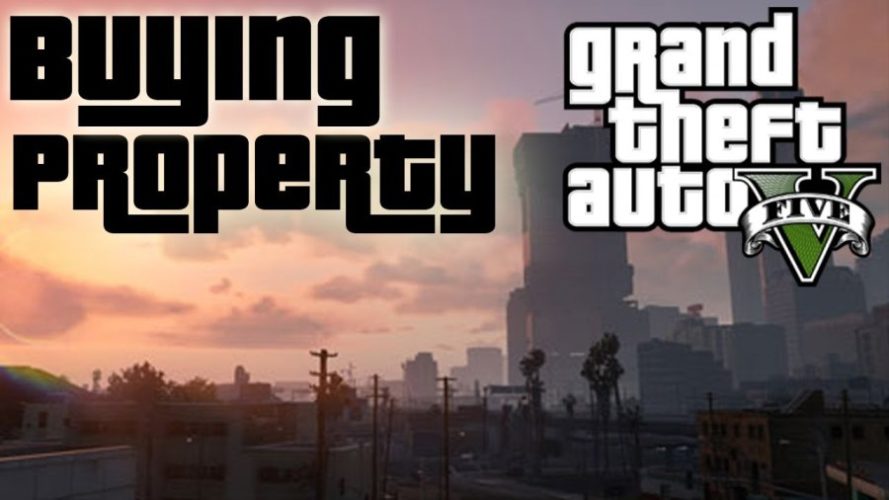
 Mainstream6 years ago
Mainstream6 years agoHow to Buy Property & Safe Houses in GTA 5 (Grand Theft Auto 5)
-

 Casual2 years ago
Casual2 years ago8 Ways to Fix Over-Extrusion and Under-Extrusion in 3D Printing
-

 Mainstream12 years ago
Mainstream12 years agoGuild Wars 2: The eSports Dream and the sPvP Tragedy
-

 Guides10 months ago
Guides10 months agoFree Fire vs PUBG: Comparing Graphics, Gameplay, and More
-

 iOS Games2 years ago
iOS Games2 years agoThe Best Basketball Games for IOS
-

 Gaming News1 year ago
Gaming News1 year agoSwiping, Tapping, and Tilting: How Mobile Games Are Played Today
